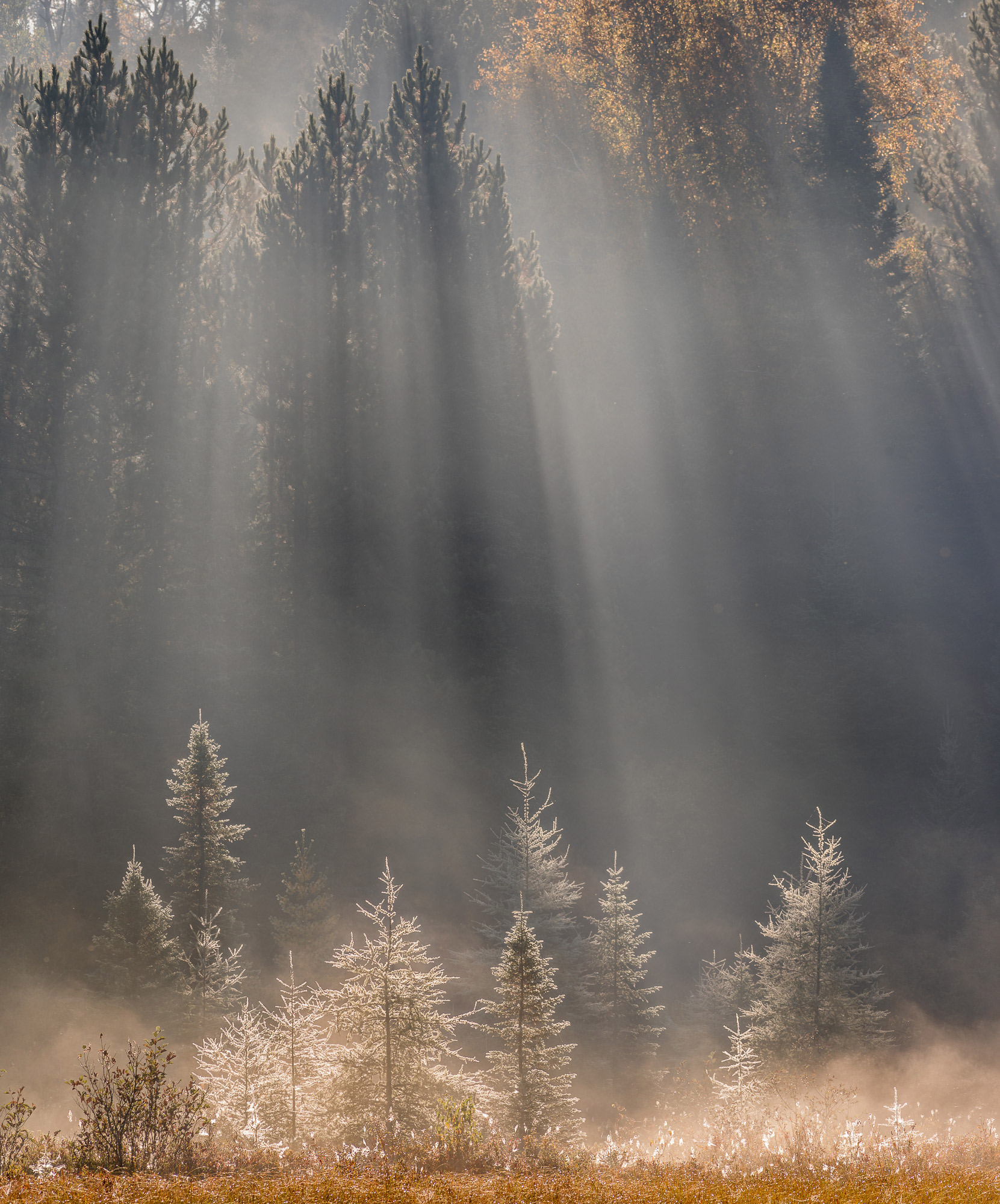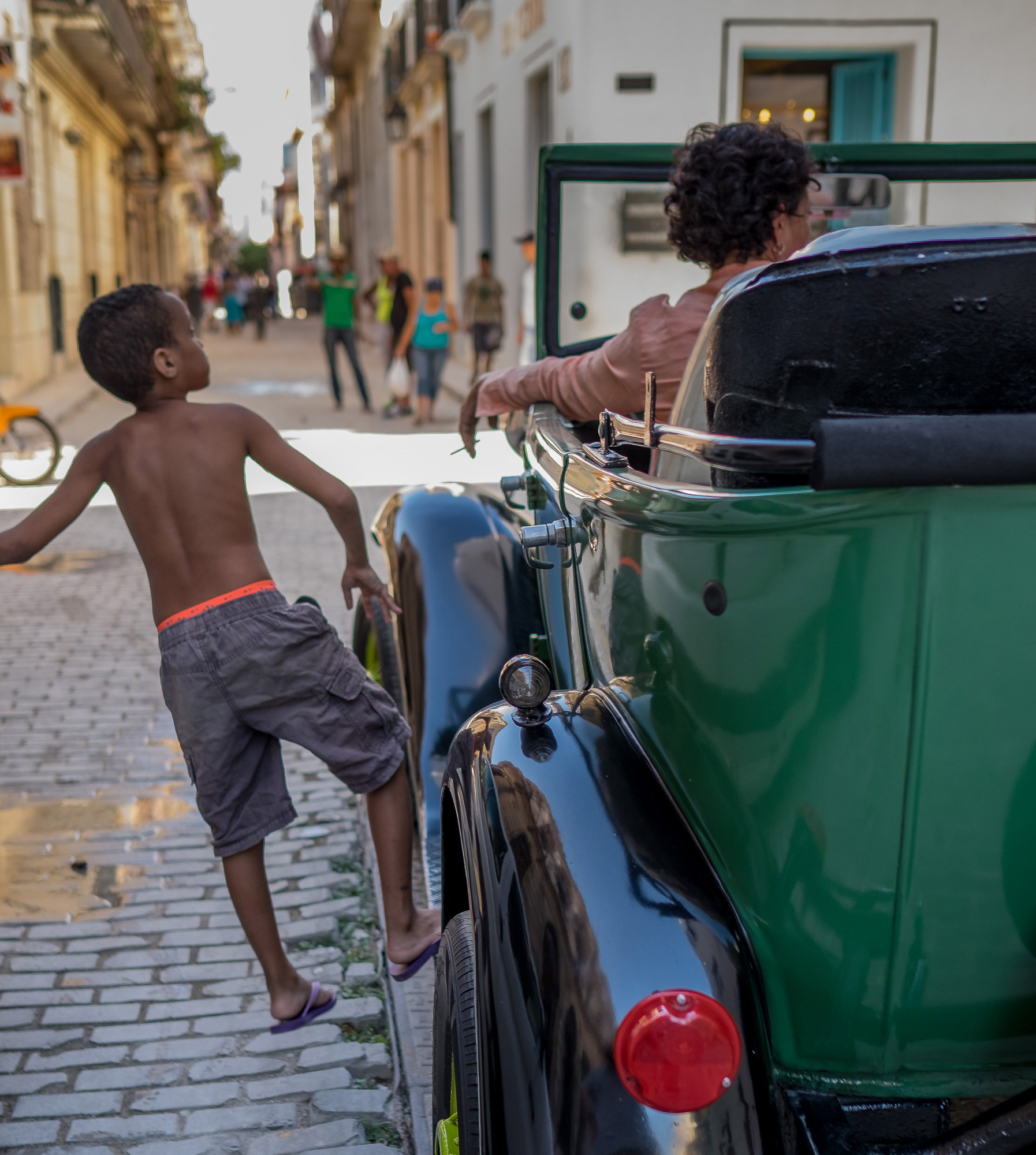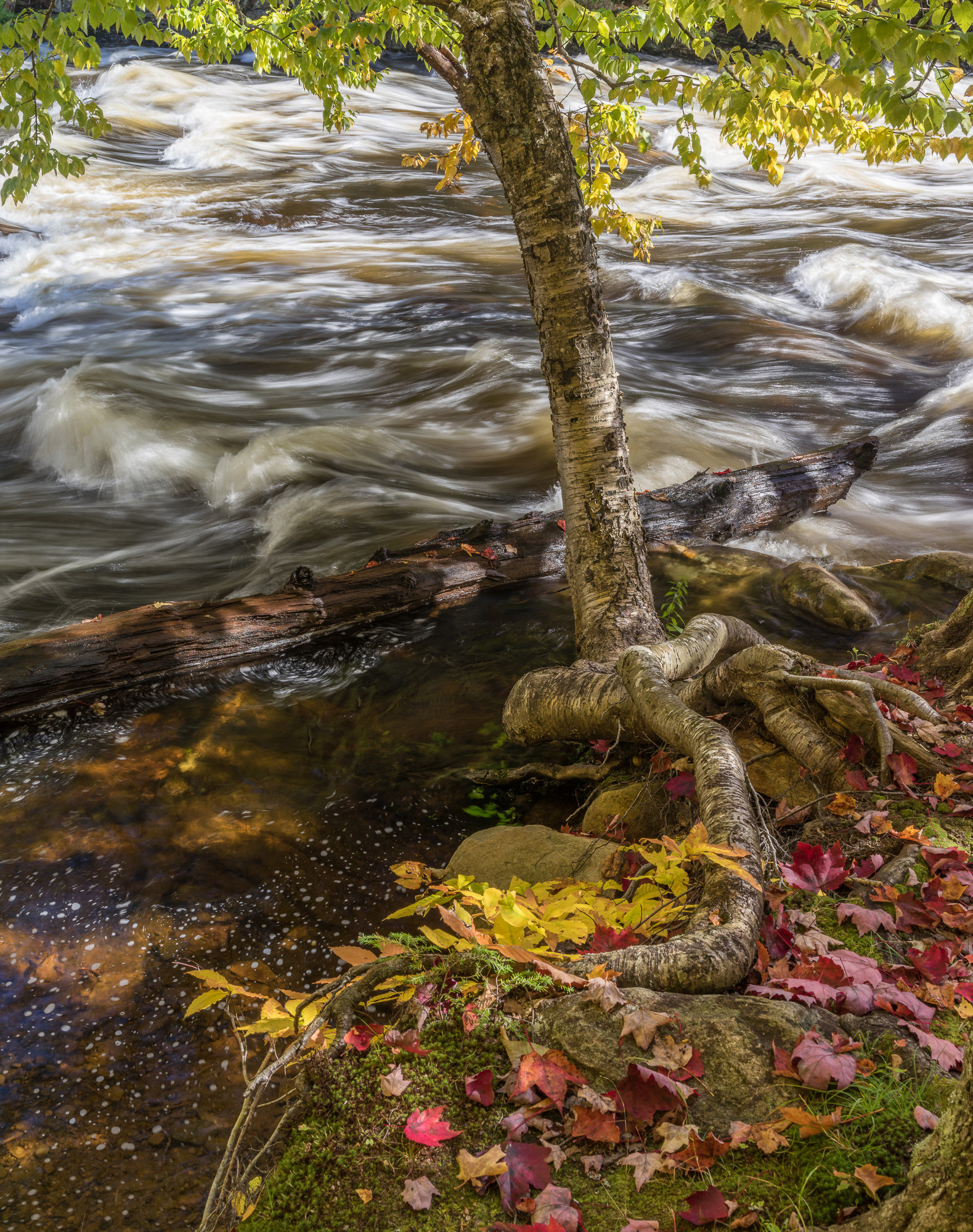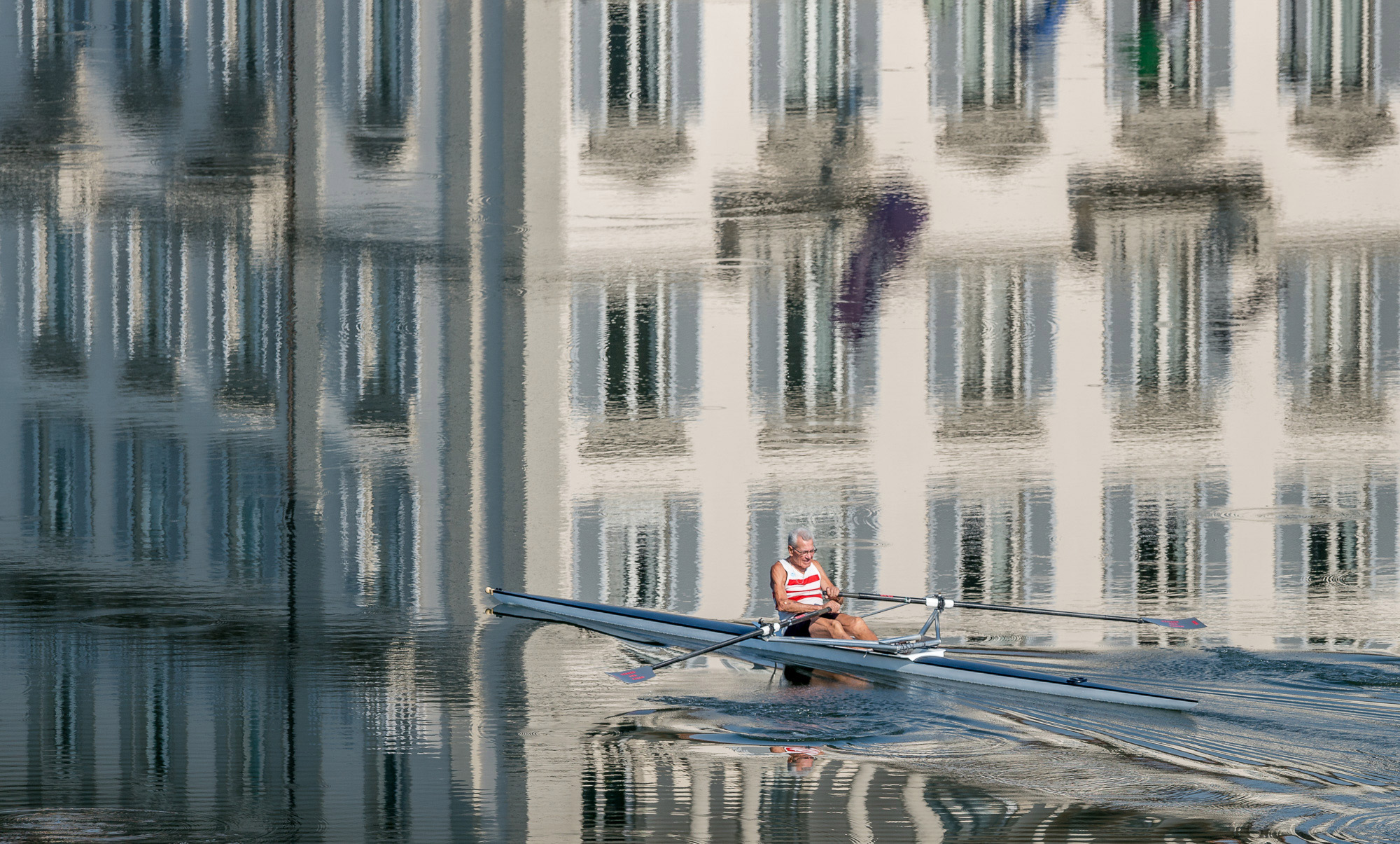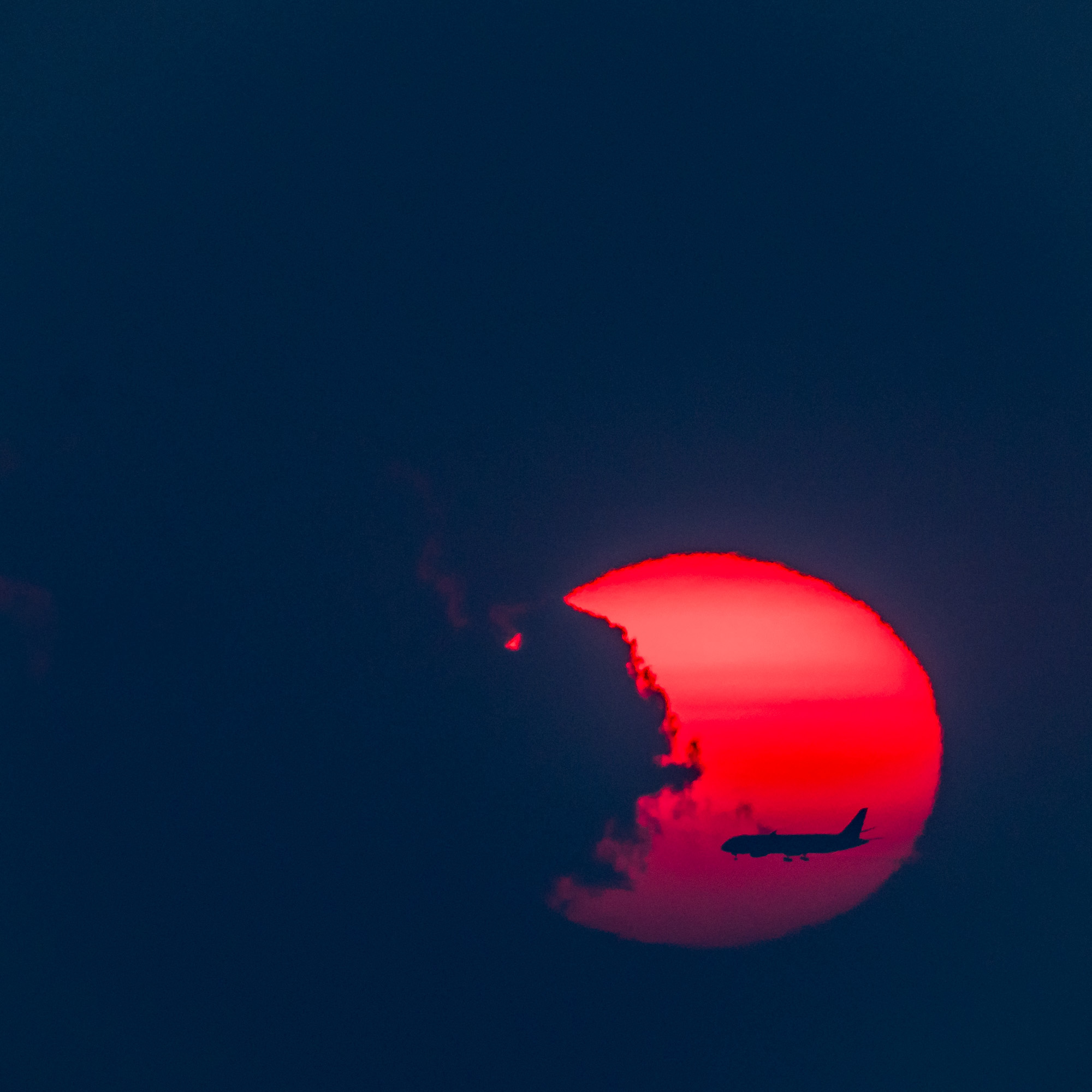

My old bandmate Yuri told me once that the secret to seeing the world anew was to look up. The lesson was offered as we strolled down a busy street, kicking trash and our thoughts into the gutter. I have followed his advice.
A world of architectural oddities and shapes spiraling off into the sky or entangled with trees and wires emerge above us in cities. It seems as if I’ve neglected to take a deep breath for an eternity every time I do remember to look up — my perspective shifts when I see what is looming.
One distinct feature of Jacob Mitchell’s work is that it contains intriguing and beautifully framed windows onto the world circling above the (sub)urban dweller. Another aspect which I appreciate is the fun and “surreal” conversation being had between the human-made and the natural world. The constructed realm of symbols and signs, branding and consumerism meet up with the most cherished parts of the natural environment’s song and dance.
His bizarrely vibrant images are very contemporary. How they are fabricated is likely a contentious point for many professional photographers, but I am tolerant of all types of process if the results are worthwhile. I believe it is useful always to explore the times in which we live and embrace the makers who are emerging. One could argue that collage is essential to learning and that our photographic tools almost demand it. Is the photographic, photography?
I reached out to Jacob to get a read on this young artist’s work.
All photographs were taken with The Canon 60D with 50MM lens


JR: Hi Jacob, very kind of you to illuminate your work and process for the Luminous Landscape community. We welcome you!
Your work has this playful way of inviting beauty into the most banal objects of our human-made environment. Humour is married to these moments. There is also a comment on branding and the barrage of messages we endure. Something else very austere and haunting, like a world where humans have just vanished, is also present.
Do you always set out to shoot these signs, light poles, and objects or do they call your attention each time and how long have you been fascinated with these totems, including the type of buildings you shoot?
JM: I never specifically set out to shoot these things, they were always just present whenever I decided to take photos. Back when I first started shooting those subjects, I was just naturally drawn to them. I am not sure why I was so fascinated with them, but it’s been an interest of mine for a while. Now it’s honestly just second nature to shoot them.




JR: Your empty sign series feels at once very informed by design and also much more about the message of the empty sign, I get the impression you may feel these empty signs are vaguely telling of something frightening or that they point to some additional meaning, at least they do for me, thoughts on that if any?
JM: When I first started the Empty Signs series, I didn’t overthink it; there is an abundance of them where I live, so I decided to make a series. After I had finished the series, an additional meaning became more clear to me. I feel as if it shows viewers all of the places that once had names. Everything from fast food restaurants, sporting good stores, and hotels are all just forgotten. The signs are giant decaying monuments to me which shows the crumbling of capitalism in America. They’ll leave them there to rot until it’s time to build something else to make someone more money.
JR: You have this very decided time of day presenting itself in your shots, is this an essential feature of your process? Magic hour is a brief window, how do you plan for and work with light.
JM: It’s not an essential feature of the process, I always enjoy taking photos in magic hour, but it doesn’t happen all of the time here, and I’m not patient enough to wait for the right light. I’ll take a photo of a sunset, then go out the next day in the middle of the day and take another picture and make a composite.
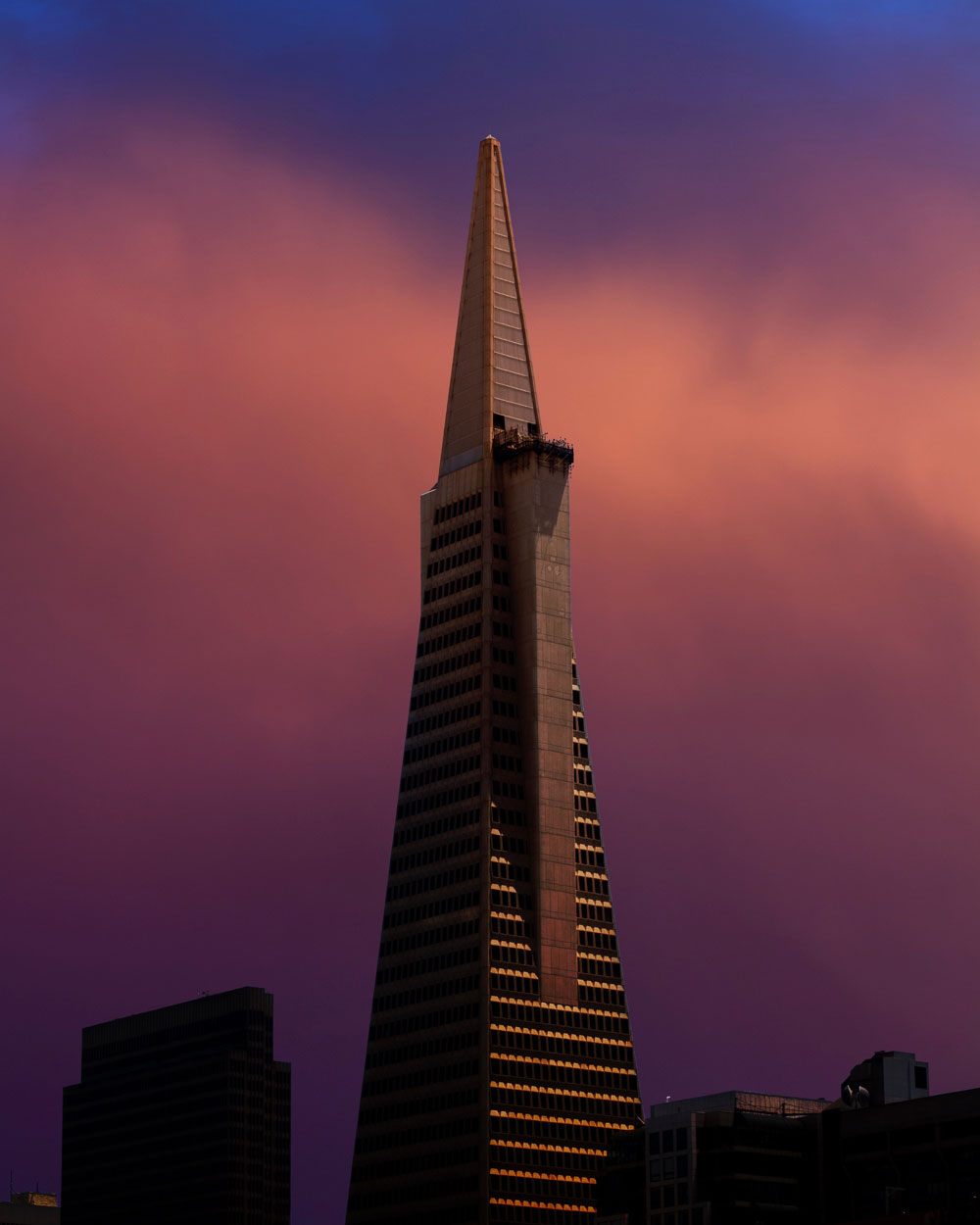



JR: The empty and haunting element might be a feature of the angles you are capturing buildings at, but what do you think is being said about the world of structures and people in your work?
JM: Everything is beautiful! I like to show people and places that generally would be boring and mundane but which are not. They have beautiful qualities which can be made into something enjoyable to the eye.
JR: Could you tell us about your printing process and what you try and achieve in print and how?
JM: I’ve tried so many different printing techniques. It’s a pretty stressful process, but it’s all worth it at the end. I use to work at a print shop, the only perk there was that I could get prints made. I’ve realized there is a lot of trial and error with printing. I try to achieve what my photos look like on Instagram. It’s not until after I print the image that I’ll see something wrong with it and have to go back and edit more. After a few times of going back and forth, I’ll finally have something that I’m proud of.






JR: What is your processing interface? Do you use Lightroom, Photoshop? Also, what percentage of post work is part of your flow?
JM: I only use Adobe Photoshop. It honestly all depends on the photo, but I would say about 70% is made in post work.
Photoshop is a hell of a tool.
JR: Your work has consistency, and for me, that is the sign of vision or discipline. In today’s world of pictures and image overload, how do you feel you’ve begun to stand out as a photographer or artist?
JM: There’s so much going on in the world of photography. It’s continually growing and changing, never constant. You have to stand out in today’s world if you want any recognition. I’m just having fun with it. I feel like if you keep consistency in your work, you’ll be able to stand out. I’ve learned that people are comfortable with consistency.


JR: I am a skater, I even went to Woodward Skateboard Camp and tried to get sponsored when I was a teen. I took it seriously, and though I am so far out of my prime and was never that good, the culture and identity are forever with me. I always see this humor and joy in skate culture, it is somehow very irreverent and yet healthy. Tell us about skater culture and this view of freedom, as it seems part of your world? Is that true?
JM: That’s awesome though! I never really took skateboarding too seriously, though I spend a good amount of my time skating. I feel as if skateboarding carries some sort of true individualism with it. I love skate culture and the freedom you can have with skateboarding. Skaters are very imaginative people, every skater I know is doing something creative.




JR: Any parting thoughts or words of encouragement you’d like to share with the Luminous Landscape community?
JM: Keep shooting. Try new things. Write down all of your ideas.
Thank you, Josh!
For more of Jacob Mitchell’s work head over to his Instagram and his site.
https://www.jacobmitchellphoto.com
https://www.instagram.com/thesoggyblanket







